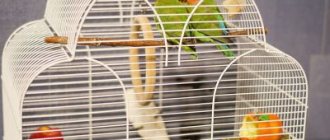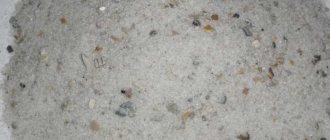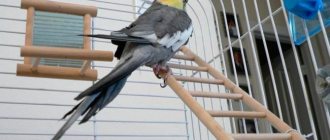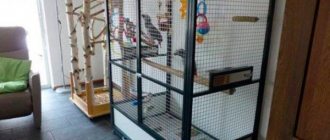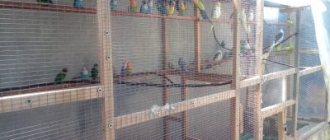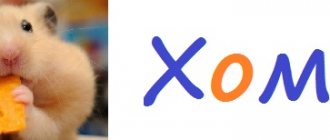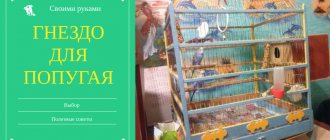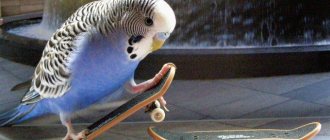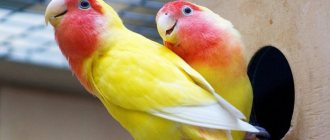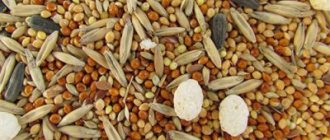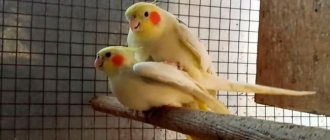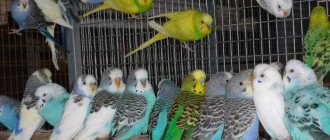To keep parrots you need a spacious and comfortable home, especially for large birds or flocks of birds. To set up an enclosure for a parrot yourself will require a lot of time, effort and money. An alternative option is to buy a ready-made outdoor or indoor structure. Aviaries have clear advantages over small cages, but they also have disadvantages. Let's consider all the pros and cons, and also disassemble the enclosure into its components and think about whether it is possible to make it yourself.
Description
The original French word "aviary", translated as "to fly", meant "a large cage installed in the garden." Usually birds lived in it, but later the enclosures were also used for keeping and breeding small fur-bearing animals. They were installed in fur farms, on personal plots, and in apartments.
Today this is a very common option for a bird house. In the assortment of specialized stores you can find a large number of models for various types of parrots.
For feathered inhabitants, including parrots, an aviary is, of course, much more comfortable than a cage. Here you have the opportunity not only to spread your wings, but also to make short flights. In addition, in a spacious home, the blues will never overtake a bird - communication with its own kind will not let it get bored.
Description of the requirements for the enclosure
A noticeable disadvantage of the enclosure is that such a bulky thing rarely fits into the interior of an ordinary apartment or balcony. The cost of the structures sold is also not attractive. That is why hobbyists sometimes think about the need to independently manufacture a spacious bird house that would not only meet the dimensional requirements, but also provide the birds with the necessary living space.
What to feed a crow at home?
The undeniable advantage of such a pet as the hooded crow is that this creature is an omnivore. The only condition that must be observed when preparing a diet for a crow is a variety of “dishes”. The main menu of birds consists of the following products: chicken giblets, boiled or raw meat, various cereals, eggs, fish, vegetables and fruits, bread.
In addition to the above, crows can happily eat frogs, insects, chicks and all kinds of plant foods. For wild birds, the main food is food waste.
For normal growth and development, house crows must be given vitamin and mineral supplements. It is not recommended to mix them with food; instead, place them in a separate feeder so that the bird itself chooses what it needs.
The diet of chicks is not much different from the adult menu. At first, in order to win over the feathered babies, they are hand-fed. Then they are gradually taught to eat from the feeder on their own. Chicks are recommended to prepare mash from the following products: porridge, meat and vegetables. The last two ingredients should be finely chopped.
Your feathered pet should always have fresh, clean water available. In order not to harm the bird, you should not feed it spicy, salty, fried foods or fatty meats.
Types of enclosures
Indoor
Thoughts about a large cage usually appear when there are more than two parrots at home. This is better than keeping birds separately in several different, smaller houses. In addition, pets need to be given the opportunity to walk daily, which is not necessary in a larger room.
Of course, an aviary installed in an apartment will take up a lot of space. But if the owner has imagination, it can become an original decorative element and even decorate the room.
Indoor aviary
Speaking about the requirements for indoor enclosures, we mention the following:
- The minimum dimensions for a structure housing more than two small parrots should be 100 by 50 by 150 cm (height, width, length).
- For small species, a fine-mesh, preferably welded, mesh with 3 mm rods will be sufficient. For large parrots, the wire thickness should be at least 5 mm. A thinner bird will be able to snack.
- The production of the design you like begins with a general drawing and the formation of a frame from bars, which are fixed with furniture corners.
- One or more retractable trays are installed at the bottom of the enclosure.
- It is important to think through the size of the door in detail: it should prevent your pets from unauthorized forays into the wild and at the same time be convenient for cleaning the inside of the cage.
- The usual installation of an enclosure is directly on the floor, on legs or on wheels. They are rarely hung on the wall, but with their impressive dimensions this would be problematic.
https://www.youtube.com/watch?v=Po6ubYeC9SY
Some hobbyists simplify the construction process by enclosing part of the room with a mesh. However, in this case, it is worth keeping in mind that droppings, feathers and food debris from parrots accumulating on the floor can attract rodents and various insects. As sources of infection, they will also penetrate feeders and damage the grain mixture, making it unsafe for birds.
To prevent this situation, it is necessary to protect the floors - for example, cover them with sheet iron, bending it over the wall space (at least 30 cm).
Important! The appearance of rats and mice in a cage at night can cause panic in birds, which can lead to injury and stress for your pets.
Street
In the summer season, it is advisable to install an aviary outside. The indoor one can be moved to the terrace, loggia or balcony. This way, your pets will not only be able to breathe fresh air and feel almost in the lap of nature, but also communicate with wild birds.
Outdoor, collapsible, aviary for parrots. Outdoor Aviary for Parrots
Outdoor enclosures also have a number of features that are worth talking about.
- The size of an external bird house can be much larger than an indoor one. For example, 1.5 meters in height and 3 in length. Or choose arbitrarily - here your imagination is unlimited. However, it is worth considering that in enclosures more than 2 meters high, catching birds or maintaining the premises becomes quite difficult tasks.
- Inside it is necessary to provide shelter from direct sunlight, rain, and strong winds.
- The enclosure must have a roof.
- The front and side mesh walls should be double so that random animals and birds cannot come into direct contact with your pets.
- The bottom must be protected from rodents that can dig into the cage.
- As components of the structure, it is better to choose materials that are durable and not subject to weather conditions and attacks from street animals.
- It is advisable to consider where your birds will spend the cold seasons: either the aviary will be portable with the possibility of installing it inside the house, or you will have to think about the pets’ habitat in another cage.
Do-it-yourself cage (valier) for parrots - 2
Year-round
Creating or purchasing an all-season bird house should be taken very seriously. This is what should distinguish this design from any other type of enclosure:
- A large bird house should also have an internal house with heating and artificial lighting. Birds will hide in it in case of unfavorable weather conditions.
- It is necessary to have a foundation (with a trench deepened by 30-40 cm) or strong, stable legs.
- It is better to make the floor in a large cage for year-round keeping of parrots with a slope - then when disinfecting the room, the liquid will drain, which will simplify the cleaning process.
- It is advisable to use a thick linoleum sheet to facilitate debris removal and protect the bottom of the enclosure.
- If a large cage is built in such a way that a tree grows right in it, your birds will already have a ready-made play stand and shelter from the bright rays of the sun as close as possible to natural habitat conditions.
- And in a year-round bird house, a second, protective net with wider cells should also be provided. It is pulled at a distance of up to 10 cm from the main one.
- It is worth installing supports in the corners of the bird house. They can be metal posts reinforced in the ground with concrete pouring. Corners are welded onto them, which will hold either the main or additional mesh.
- It would be nice for an outdoor aviary to have a vestibule - it will prevent the bird from accidentally flying out when the door is opened. In addition, such a small utility room is convenient to keep tools for internal cleaning.
- As a lock for a room with large species of parrots, you should not limit yourself to a latch; it is necessary to provide for the possibility of locking with a padlock.
Walks
Surprisingly, crows, despite their restless disposition, easily learn and get used to a leash. Of course, this is not a dog or a cat, so some precautions must be taken on such walks:
• When training a crow, your hand should be in a special leather glove. • It is necessary to select equipment for walking very carefully so that the bird does not get injured later. • On walks, make sure that her relatives are not nearby. Large concentrations of wild crows may make your pet want to join in their free-ranging lifestyle. There are times when a crow attacks other birds, trying to protect its territory. This can also result in tragedy and trauma for her.
If it is not possible to walk with the crow in the fresh air, then the owner of this feathered beauty must provide it with a sufficient amount of ultraviolet rays in the house. The ideal option in this situation is sunbathing. It is necessary to take into account the fact that ultraviolet radiation does not pass through glass.
Source
The best place to install an aviary
A good location for an outdoor space for your feathered friends can be considered the most illuminated and least wind-blown place on the site. It makes the most sense if the outer, widest wall faces the south or southeast. Then your parrots will be able to welcome the sun and stay in the light as long as possible. But the northern or leeward wall should be protected with some dense material, for example, a sheet of plexiglass.
#Aviaries for parrots.
It is necessary to install the indoor view of the bird's home in the brightest place in the room - it is usually located near the window. Or you will have to resort to using a lamp.
Where to place
The aviary can be arranged in a residential area or outdoors. If you choose a place in the apartment, then it should be quite large. But if you use different decorative parts, the enclosure becomes a full-fledged part of the interior.
When choosing a location, the following recommendations are taken into account:
- the structure should be located in a well-lit place, and if the birds do not have enough sun, then artificial lighting will have to be organized;
- It is prohibited to place the enclosure near batteries or household appliances;
- provides free access to the doors to simplify cleaning;
- It is desirable that the birdhouse can be easily moved to another place.
If you choose an outdoor location, then a canopy is required, thanks to which the bird can hide from precipitation or direct rays of the sun. The pallet will have to be securely reinforced so that it is not destroyed by rodents.
DIY aviary for budgies
Net
Stainless steel
This species, as the most durable and safest for the health of birds, is considered today the most optimal when making an aviary.
Galvanized
This mesh is no less durable than the previous one, but the presence of zinc in it makes it unsafe for birds. Especially when you consider that the habits of many species of parrots include climbing wire meshes. In this case, birds, of course, use not only their paws, but also their beak.
Our birds are having a housewarming party, they now have a large enclosure with all the amenities
The advantage of the mesh is its availability both in price and availability in stores. Therefore, amateurs often use galvanized steel to make their own enclosures.
Important! If you nevertheless purchased this type of mesh, then first wash it with warm water and soap using a sponge. Then you need to wipe the cells with table vinegar. After rinsing in clean water, let dry. Only after completing this procedure can you begin to work.
Iron
The most widely used in the manufacture of enclosures and for birds is the so-called “animal farming” net. Made using precision welding method. It is more comfortable than wicker. In addition, it is easier to mount it on any frame - both metal and wood. At the same time, damage to a single link will not make the rest less strong.
Outdoor aviary for parrots part-3
It is sold in rolls in hardware stores. To keep small parrots, take mesh sizes of 13-16 by 48 mm, for medium ones - 25 by 25 mm, for large birds you can use 30 by 50 mm.
Metal with plastic coating
This type of mesh is not recommended for use in bird aviaries.
Plastic
The least durable and unsafe material for the health of birds, sometimes still used in the manufacture of bird houses. In addition, this type of mesh is too soft for the paws, and the bird can get caught on the mesh when flying.
Frame
It is made of metal or wooden bars, on which the mesh is secured with duralumin corners of various thicknesses. Sometimes they are simply attached to the wall. If the weight of the future structure will be significant due to snags, toys, nesting houses, you can use steel corners.
DIY bird aviary. Size 2.2 x 2.5 x 4 m.
Doors
You will need to make several of them in the enclosure. For example, in a small room there can be two. One is located on the lower level and serves to replace water, fill the feeder and clean the bottom. The second one is higher. It is intended for use in the upper part of the bird's house. Sometimes you will have to catch sick parrots to place them in an isolation ward - when planning the number of doors, take this point into account.
In an outdoor, especially all-season large room for birds, it is imperative to have a human-sized door so that you can go inside and do everything you need.
Pallet
To manufacture this part of the structure, it is necessary to use materials that are easy to disinfect and do not suffer from its effects. Let's look at the most popular ones.
Plywood
It will only serve for a while, since it tends to swell from exposure to moisture and delaminate. Especially if you need such a method of cleansing from parasites as scalding with boiling water.
New aviary for parrots
Plastic
You can use ready-made kitchen trays, which are usually made from food-safe plastic. However, to do this, you will have to adjust the dimensions of the future enclosure in advance to the size of the existing box.
It is quite possible to make a plastic tray yourself, using non-toxic glue that is safe for the health of birds.
Galvanized sheet
A fairly durable material, however, if it is not too thin. Otherwise, deformation of the pallet cannot be avoided even with careful handling.
Arrangement of the enclosure
Perches
Be sure to take into account the type of parrot when choosing crossbars for your future enclosure. There should not be many perches so that the cage space is not cluttered. Two on the top tier and one at the feeder are enough.
We are building an aviary for parrots - Results. How to make a bird aviary
It is allowed to use driftwood or tree branches brought from the forest or park. Of course, it would be useful to subject such natural material to preliminary disinfection.
Important! Do not use plastic perches. Wood is the traditional and best material for bird perches or perches.
Feeders
They must be durable and made from safe material. Thick wood or non-toxic plastic is acceptable. It is advisable to have fasteners: you should not place feeders on the bottom of the enclosure, it is better to hang them on the walls. Make sure that the edges are not sharp and cannot injure the bird.
Drinking bowls
Much of the above is true for them as well. True, it is better not to use this accessory made of wood. In enclosures, you can also use automatic or vacuum drinkers. They do not get dirty as quickly as open water containers.
Review of #aviary for parrots
Roof and interior decoration
It is desirable that the roof of the enclosure has protection from rain and sun. Metal tiles or slate will successfully cope with the assigned functions. It is better to avoid polycarbonate; it transmits sunlight perfectly.
A living tree growing inside a bird aviary can be an excellent replacement for building materials. Thus, the atmosphere will become as close as possible to the natural habitat.
Naturally, the interior decoration of the bird aviary contains:
- perches;
- drinking bowls;
- feeders;
- houses for shelter from bad weather.
Aviaries for medium and large parrots must be locked. The latch is not a reliable protection for smart birds that are able to open it on their own.
